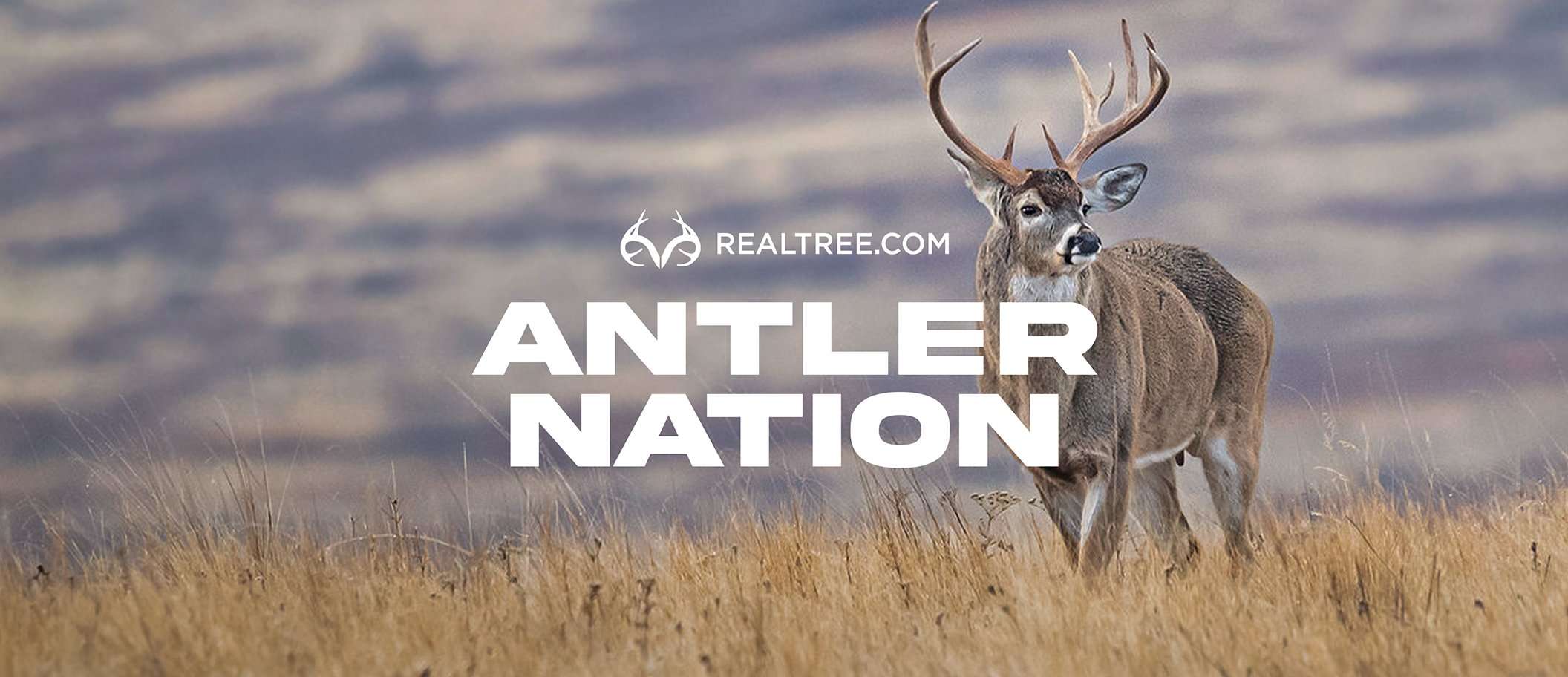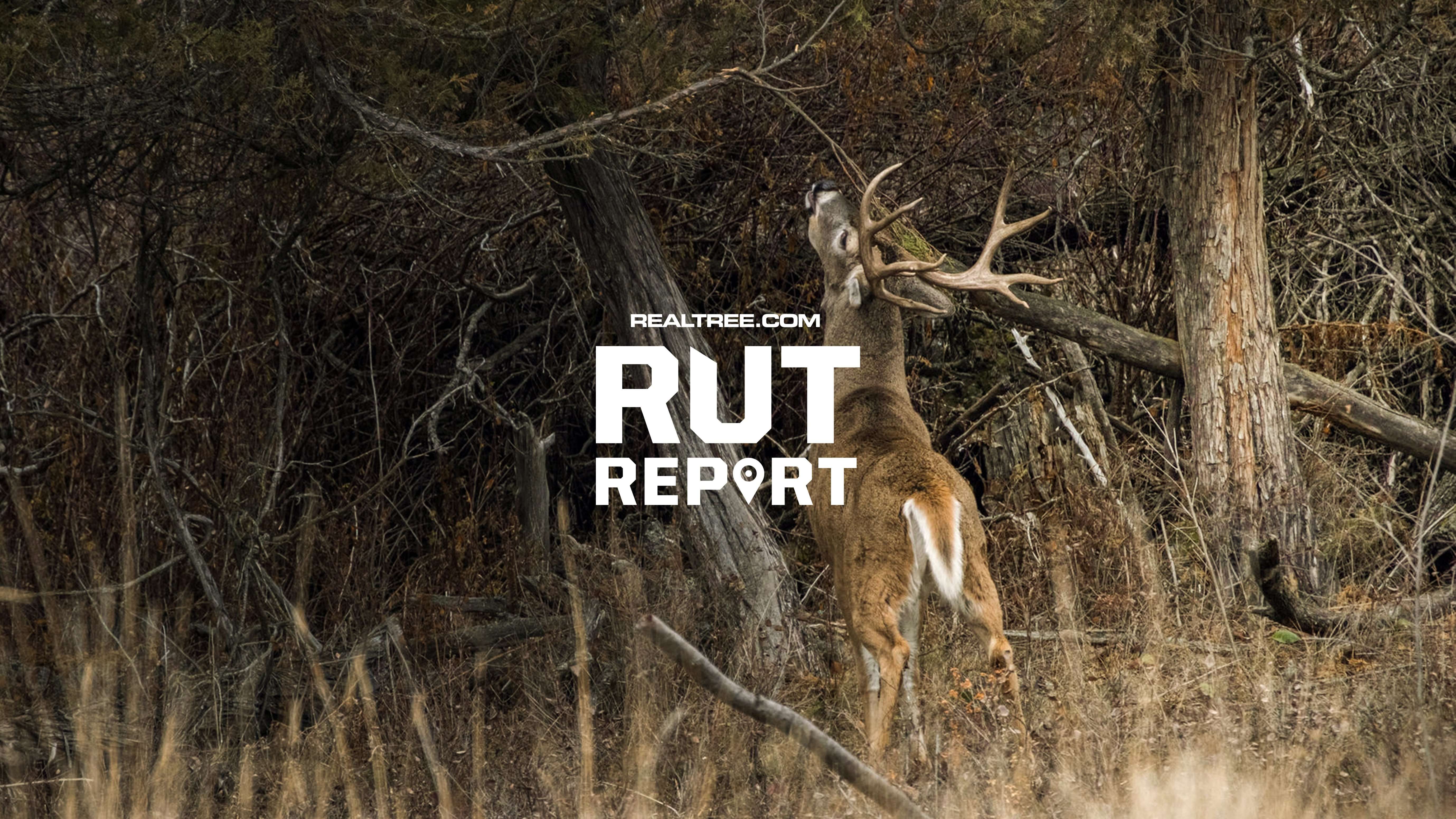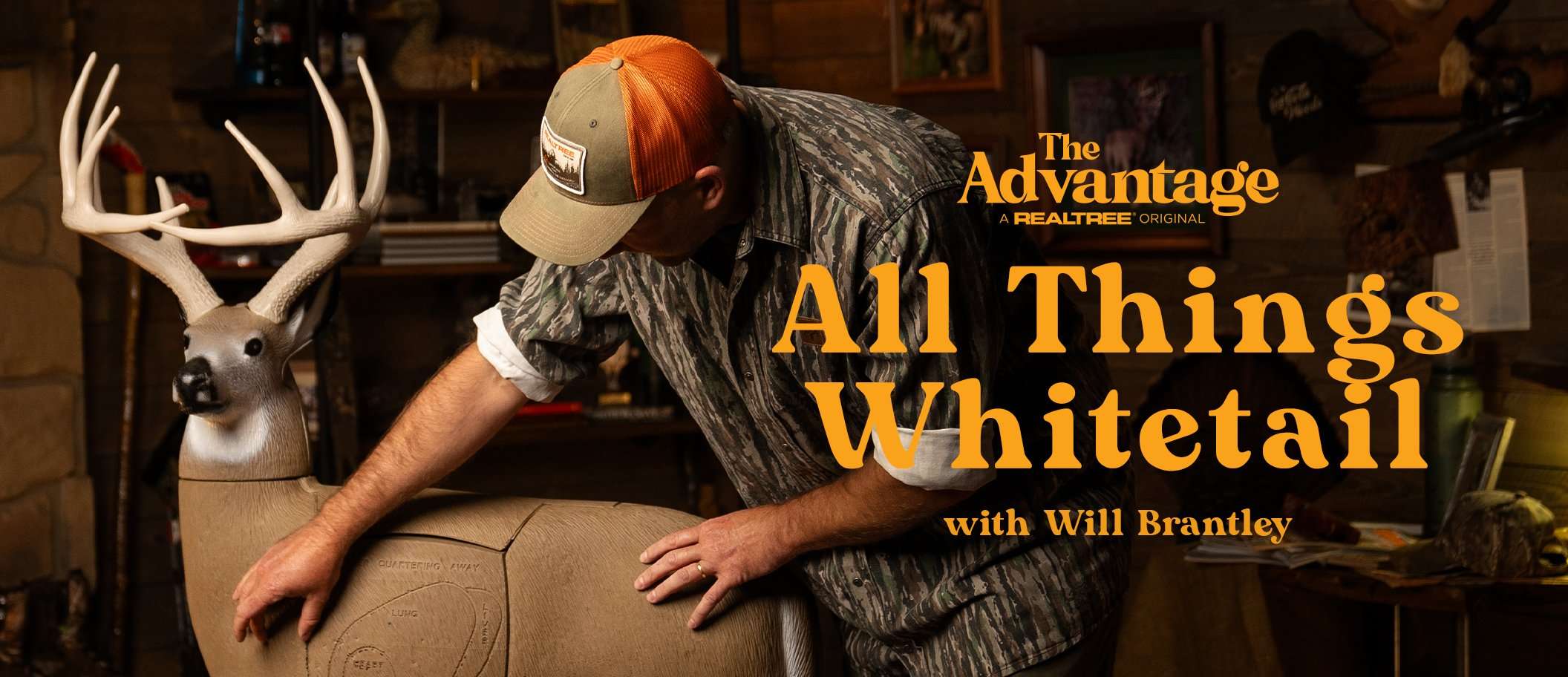Few hunters have rattled up more bucks than Mr. Whitetail. Larry gets into details on when, where, and how to crash a set of antlers together
A young buck was standing 20 yards away, and I raised the two whitetail shed antlers I was carrying and brought them together with a cloud crash. The little buck jumped high and ran away as fast as he could, tail tucked between his legs.
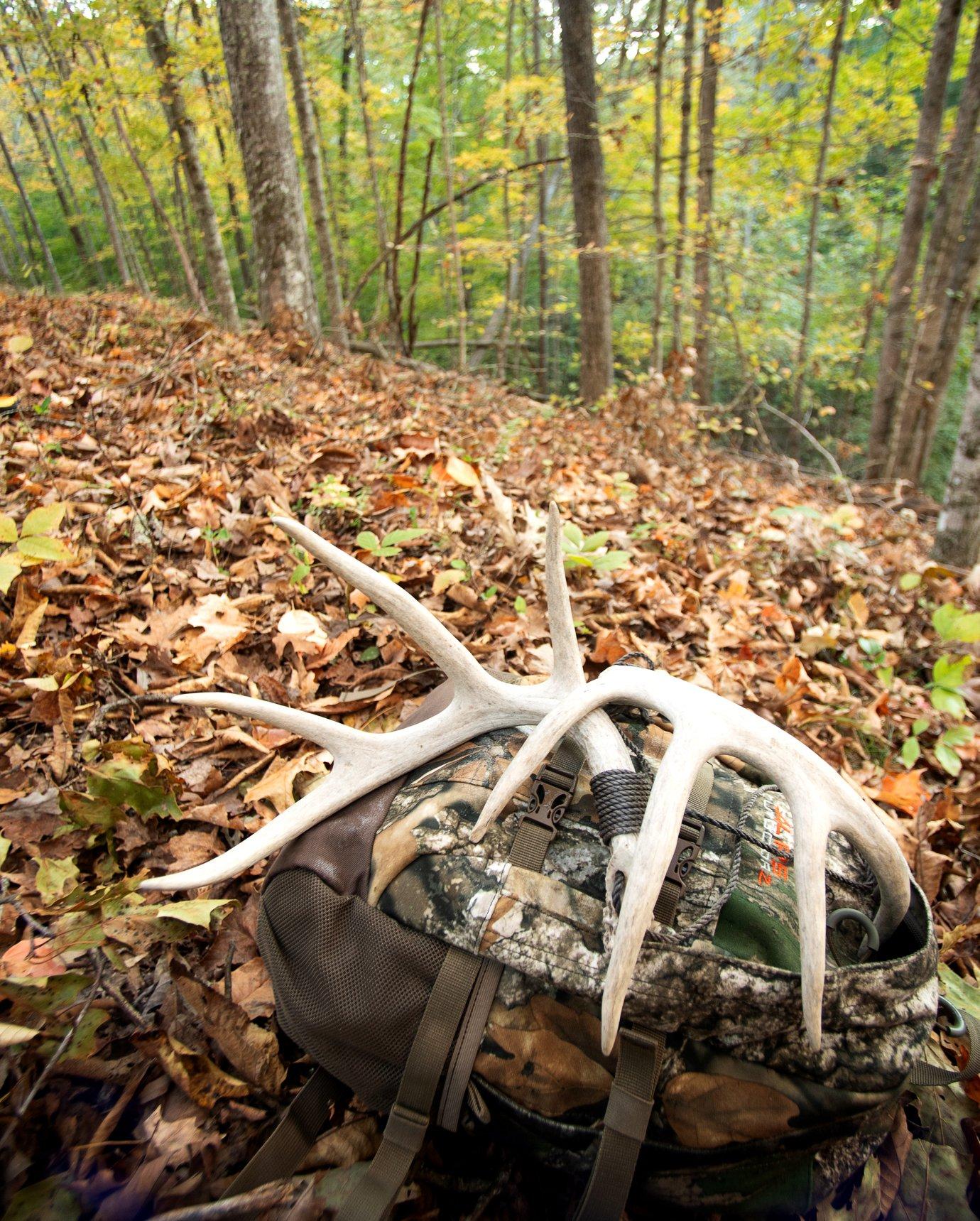
Done correctly and at the right time, rattling can be an effective way to bring in big bucks. Image by Bill Konway
My first attempt at rattling did not go well. But I was not discouraged. If legendary Texas wildlife biologist Bob Ramsey said rattling worked, especially in the pages of Field & Stream Magazine, no doubt it would! Sooner or later.
Later, while perched in an oak tree under fog so dense I could scarcely see the ground, I again clashed my rattling horns together. Through the foggy gray shroud, a 6-point buck followed by an 8-point mystically appeared. They stopped under my tree. I was so enthralled it was not until they disappeared I remembered my dad’s 30-30 there at my side. I’ve been hooked on rattling in bucks ever since, over 60 years.
WHEN TO RATTLE
Why do bucks respond to rattling? I was, as I am now, a bit uncertain. Admittedly, during the fall bucks have high levels of testosterone coursing their veins causing them to be continually irritable and anxious to procreate. I know with the approaching breeding season, fighting among whitetail bucks is common. It might be to to establish dominance, to prove themselves, and/or to help lessen built-up tension. Maybe they respond aggressively to rattling to see which bucks are fighting, to become involved in the fight, to possibly steal a doe while other suitors are engaged in combat, and because they are just plain curious.
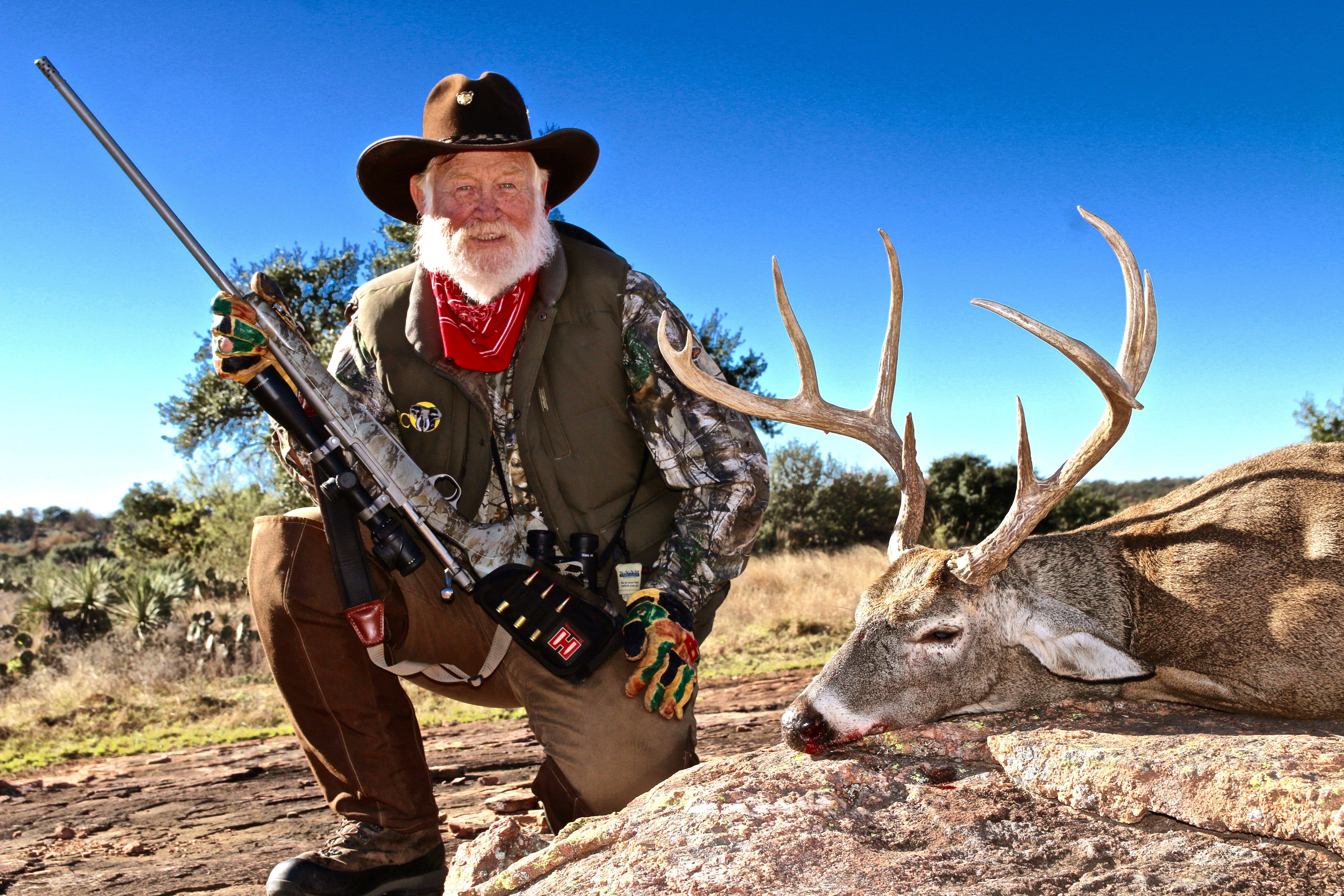
No one knows exactly why bucks respond to rattling, but there is no question that they do. Image by Larry Weishuhn
Testosterone levels in bucks increase with decreasing daylight. Velvet on the fully developed antlers dies and starts coming off the antlers, and bucks start rubbing trees to build neck and shoulder muscles soon after that. They soon start making scrapes, too. When I find active scrapes, I start rattling.
I rattle throughout the day. I learned a long time ago there is no perfect time to rattle. Sometimes bucks respond early in the morning, mid-morning, straight up noon, mid-afternoon or very late.
I have rattled at the tail end of the pre-rut (to me the best time, before the rut truly kicks off) in areas where there were more bucks than does. Rattling early, nothing responded, yet midday I returned to the same area and rattled in as many as twelve bucks or more bucks. The “magic rattling time” varies from day to day. Some days bucks may respond all day throughout the day or only a short part of it. I have yet to determine why or what triggers such.
THE INSTRUMENTS
Stepping back, the first step in rattling is to procure a set of rattling “horns.” Yes, I know they’re actually antlers! I prefer left and right sides from the same buck with decent mass and tine length (preferably a 10-point), browtines removed. With a bigger set of rattling horns, I can make a lot of noise or very little. Little antlers only make little noises. Bucks, incidentally, are not intimidated by the rattling sounds made by antlers bigger than those of most bucks found in the area.
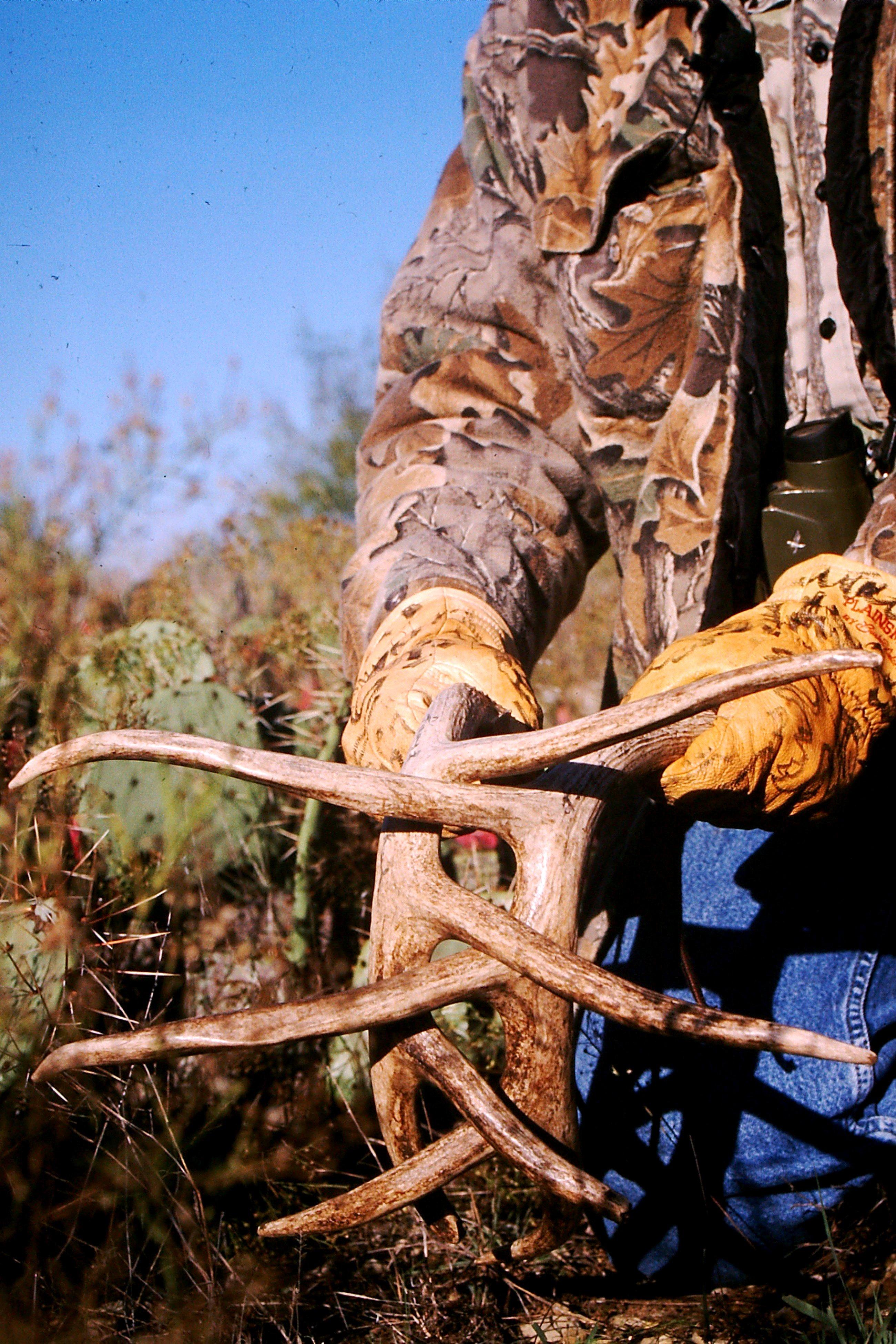
The author prefers to use a heavy set of antlers with long tines as his rattling horns. Image by Larry Weishuhn
I use the same rattling horns year after year. My favorite set is from a 150-class 10-point that I have used for over 30 years. I keep them inside my office, rather than hanging them out in the barn during the off-season. I have rattled in hundreds of bucks with those antlers and continue doing so.
WHERE TO RATTLE
Rattling works best where there are lots of bucks around. It’s about numbers more than competition. The more bucks that hear the simulated fight, the greater the chance one or more will respond. Deer can hear rattling from the better part of a mile or more, depending upon the intensity of wind.
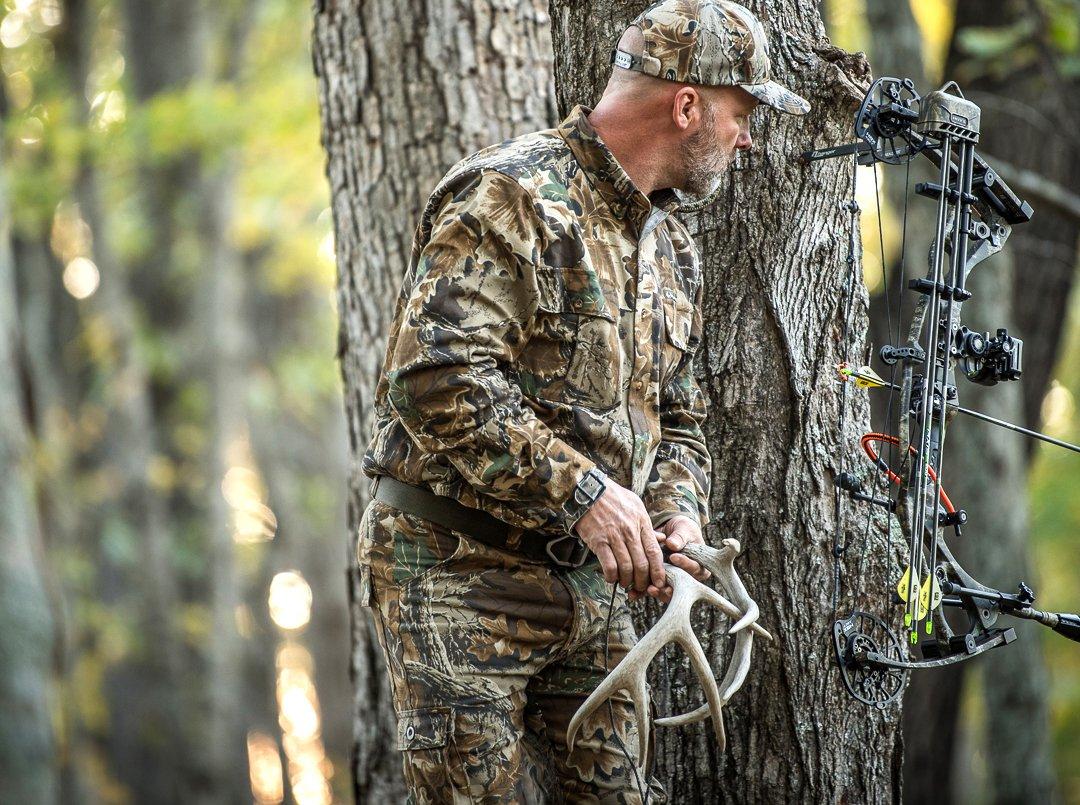
Rattle in areas with a high density of bucks like scrape lines, bedding areas and escape cover. Image by Bill Konway
I set up to rattle near fresh rubs and scrapes, next to dense bedding and escape cover, where previously bucks have been seen, but always where I can see downwind. No matter from which direction a buck approaches, he will always end up directly downwind. Deer live and die by their sense of smell! I set up where there are shooting lanes left and right of downwind. I shoot both left and right-handed, so it makes little difference from which side a buck approaches. I hunt primarily with Mossberg bolt-action rifles topped with 3-18x44 Stealth Vision scopes, shooting appropriate Hornady ammo. I also hunt with my Taurus Raging Hunter revolvers using Hornady XTP ammo. When rattling, these are nestled atop a tripod rest where I can grab them, quickly aim and shoot.
I prefer hunting on the ground. Rattling with a trusted companion, I position him or her a few yards in front of me where they might see a responding buck that I can’t see myself. If the brush is really thick I send a companion up a tree where they can watch more area than I can from the ground; always where they can see downwind.
Don’t Miss: PRO TIPS FOR SCOUTING BIG BUCKS
THE RIGHT SOUNDS
I strive to duplicate what is happening with local bucks. During early pre-rut, I spend time rubbing my rattling horns against trees and bushes. Occasionally I bring my rattling horns together timidly, like two bucks lightly sparring. They bring their antlers together, push a bit, then pull apart, but seldom do they at this stage get serious about fighting.
As the rut progresses I get more aggressive. Walking to where I intend to rattle, I still hunt, occasionally grunting, with my natural voice. I walk directly or quartering into the wind. I set up against a tree or brush where “things feel right,” where my Realtree blends in with the background. Again, I always watch downwind with shooting lanes to the left and right of directly downwind.
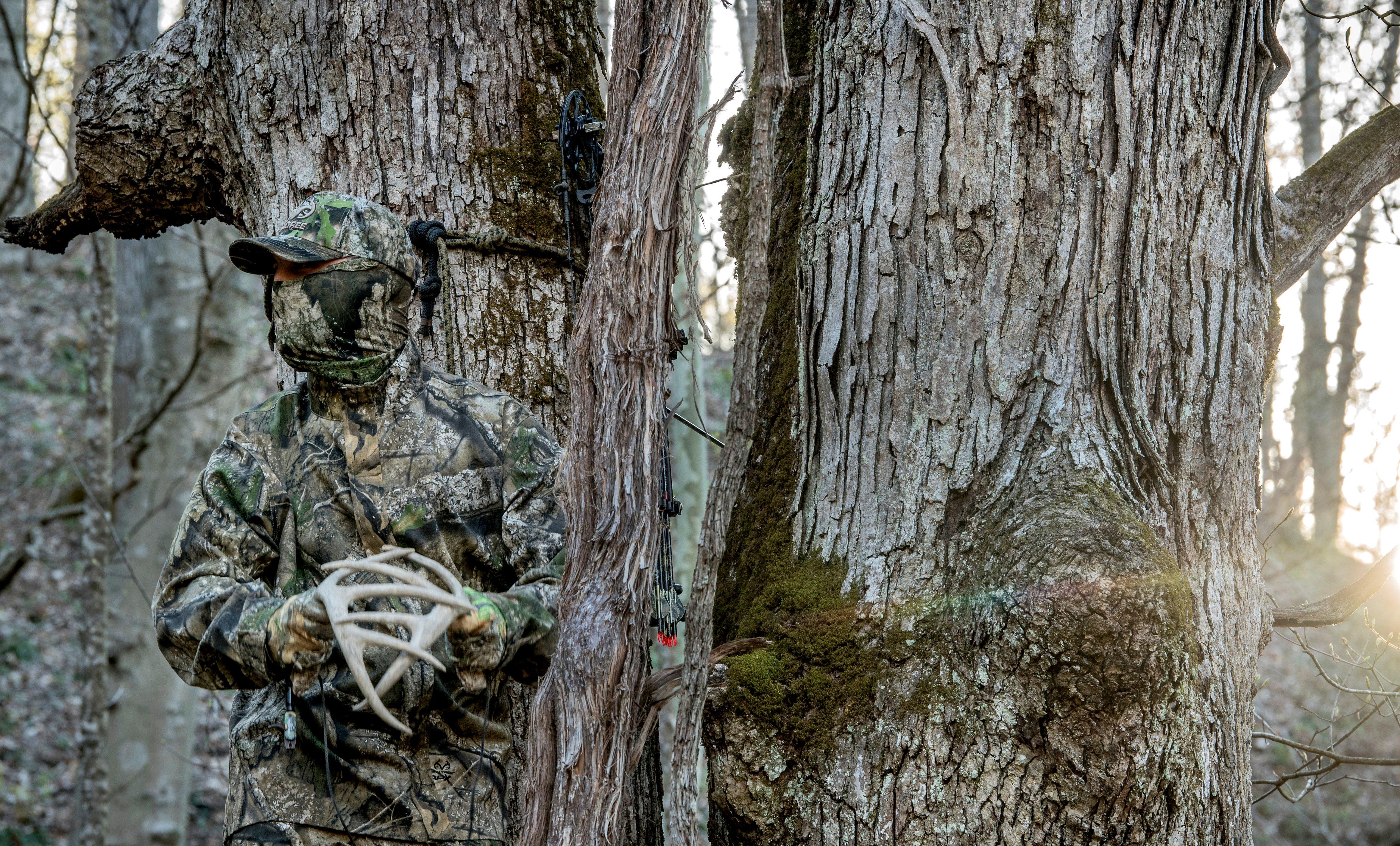
Early season tactics include raking antlers on brush and lightly tickling the antler tips, but aggressively simulating a fight can be more effective during or just before the rut. Image by Bill Konway
After sitting for a few minutes, I grunt a few times, do a snort-wheeze, then bring my horns together with a loud crash, then start meshing them together. Initially I rattle for 15 to 20-seconds, pull the horns apart, wait a minute, then bring them together once again, rattle 30 to 40 seconds before pulling them apart, and waiting a couple of minutes to rattle once again. I continue rattling with this sequence for about 10 minutes. If a buck or bucks respond that I am not interested in shooting I continue rattling. Using this process, I have rattled as many as 18 bucks from the same set up. When bucks quit responding or nothing responds I wait for at least 20-minutes before moving. Older bucks are slower to respond, while youngsters tend to come in immediately.
After 30 or so minutes if nothing has responded, or only bucks I am not interested in taking, I move at least 400 yards, find a place as previously described, then rattle once again. This time I may rattle continuously for three to six minutes. I have seen fights between evenly-matched bucks last five seconds to well over many hours. While rattling I’ll occasionally grunt, particularly to hold a buck’s attention if he starts to leave.
Rattling just before the peak and during the rut I kick the ground, break limbs and generally try to make as much noise as possible. Two mature bucks in combat make a lot of noise!
If hunting from a stand all day, I rattle for 20 or so seconds every 30 minutes. This breaks up the day and keeps me interested, but also may toll in the buck I’m hunting or attract a buck that’s simply passing through the area.
CHECK OUT OUR LATEST CAMO PATTERN: REALTREE APX
SIZING BUCKS
When rattling, the action can happen quickly, leaving you with split seconds to shoot. It’s important to know what you’re shooting at. Personally, I exclusively hunt mature bucks. During the rut such bucks generally have darkly stained tarsal glands and hocks. While I look at antlers when a buck comes in, I pay particular attention at how darkly stained, or not, his hocks are!
If you are in to antler scores, during the off-season look at shoulder mounts of various sized bucks. Glance very briefly at the mount, and then close your eyes and quickly “guesstimate” the score. Write it down, then score the rack. Do this from different angles. After much practice this procedure become almost automatic and you will be amazed how close your estimates will be to the actual score.
Bucks responding to rattling generally do not stay around long. Learn how to evaluate age and antler size, determine to shoot or not, and execute the shot in 5 seconds or less. That is not a very long time! Responding bucks too, very seldom provide perfect broadside shots. Learn deer anatomy long before picking up rattling horns!
There are no absolute right nor wrong ways to rattle. When it works, it works. The key to being successful at it is to keep trying, even if you don’t rattle up a buck the first few times you try it. Keep trying, and sooner or later you will be successful. Then, like me, you’ll be hooked on rattling for life!




